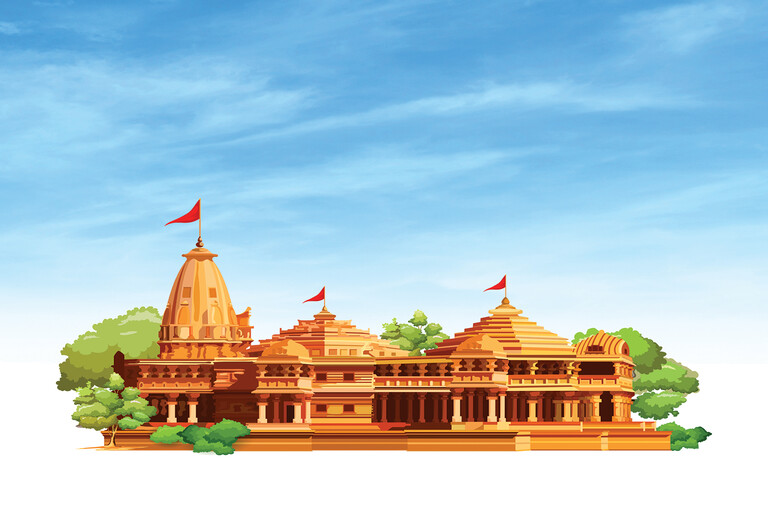
Ayodhya is a city located in the Indian State of Uttar Pradesh that holds immense cultural and religious significance. It is revered as the birthplace of Lord Rama making it a focal point of Hindu spirituality and heritage. The city’s rich history is intertwined with the epic Ramayana, and its ancient temples and ghats attract pilgrims and tourists worldwide.
In Ayodhya, festivals are not just events, but they are vibrant expressions of faith and tradition. The city’s calendar is adorned with a tapestry of celebrations, each offering a unique insight into its cultural ethos. From the grandeur of Diwali in Ayodhya that illuminates the city with lamps and fireworks to the exuberant observance of Ram Navami, which marks Lord Rama’s birth with processions and devotional songs, these festivals are a testament to the spiritual vibrancy of the city.
The traditions and rituals of every Ayodhya festival are deeply rooted in its history, reflecting the city’s enduring connection to its mythological and religious heritage. Through these celebrations, Ayodhya opens its arms to visitors, inviting them to partake in its age-old customs and experience the profound spirituality that permeates its air.
This article is about the exciting festivals celebrated in Ayodhya. Read on to take a closer look at the unique Ayodhya traditions, customs, and celebrations that make these festivals an essential part of the city’s cultural heritage.
Festivals in Ayodhya
Ayodhya is a sacred religious place that has a lot to offer to a spiritual mind. Some of the Ayodhya events are as follows:
1. Ramlila
Ramlila, also known as Ramlila, is a traditional performance art depicting Lord Rama’s life and exploits, a revered figure in Hindu mythology. It is believed to have been started by the great Saint Tulsidas and is based on the epic Ramcharitmanas, which he wrote. The performance is usually a cycle-play, with the story varying from 7 to 31 days. Rama Lila is associated with the Vijayadashmi celebrations in late September and early October, as well as with Ram Navami, the birthday of Lord Rama.
Rama Lila comprises four central styles, each possessing distinct features. These styles include the pantomimic, dialogue-based, operative, and stage performance styles. Each style is unique in its own way and offers a rich and vibrant experience to its audience. The mandali Ramlila is a popular dialogue-based performance on a platform stage. The performance is renowned for its high standard, complemented by songs, kathak dances, and eye-catching decorations. The festive atmosphere created by these elements makes it possible to observe religious rites.
This Ayodhya festival is not just a form of entertainment; it holds deep religious and cultural significance for the people who participate in and witness it. It even showcases the Ayodhya’s traditions in a very beautiful way. The enactment of the Ramayana through Ramlila serves as a medium for moral and spiritual education, fostering a sense of community and devotion among the participants and the audience. The vibrant performances, elaborate costumes, and lively music and dance make Ramlila one of the most captivating and enriching Ayodhya events for all involved.
2. Ram Navami
Ram Navami is a special Hindu festival celebrated in honour of Lord Rama’s birth. Ayodhya, the birthplace of Lord Rama, observes this festival with great enthusiasm. The entire town comes alive with vibrant decorations and lights as people adorn idols of Lord Rama, Lord Lakshman, Mata Sita, and Lord Hanuman. The streets and houses are beautifully decorated, creating a festive atmosphere.
During this Ayodhya festival, several poojas are conducted in temples and homes, and the localities resonate with the sounds of bhajans, kirtans, Satsang, and Jagrans. Many devotees perform the Akhanda Ramayana pat, a continuous recitation of the Ramayana that lasts for 24 hours, while others chant the Sundarkand, which takes three to four hours. Thousands of devotees visit Ayodhya for this occasion, and a Rathayatra, or chariot procession, also known as Shobha yatra, featuring the idols of Lord Rama, Lord Lakshman, Mata Sita, and God Hanuman, is carried out by many people.
One of the unique features of this Ayodhya festival is the grand fair that continues for two days. Pilgrims and visitors come to take a holy dip in the sacred river Sarayu or Ganga and participate in one of the most spiritual Ayodhya events. This day signifies the victory of good over evil, as it marks the birth of Lord Rama, the seventh incarnation of Lord Vishnu, who came to vanquish the demon Ravana.
This Ayodhya festival begins with offering water to the Hindu God Sun in the early morning, and many people observe a fast on this day as a way of purifying themselves. Vedic mantras are chanted throughout the day, filling the air with spirituality and devotion.
Ram Navami is one of the significant Ayodhya traditions that you definitely need to include in your Ayodhya tour packages.
3. Parikramas
Ayodhya is a place of great significance for Hindu pilgrims, especially known for the parikramas, or circumambulations, undertaken by devotees. These parikramas involve walking around important religious sites and vary in duration. The shortest one, called the “Antargrahi Parikrama,” must be completed within a day. Pilgrims start by taking a dip in the Sarayu River and then begin the parikrama from the Nageshwarnath temple, passing through several sacred sites like Rama Ghat, Sita Kund, Manupuravata, and Brahma Kund before ending at Kanak Bhawan.
Another significant parikrama is the “Panchkoshi Parikrama,” a 10-mile circuit that includes visits to Chakratirtha, Nayaghat, Ramghat, Saryubagh, and other important places. Pilgrims pay homage to deities at shrines along the route. The “Chaturdashkoshi Parikrama” is a 28-mile circular journey completed within 24 hours, undertaken once a year on the occasion of Akshainaumi.
These parikramas are integral to Ayodhya’s traditions and deeply rooted in the city’s religious and cultural heritage. They attract pilgrims from all over India and contribute to Ayodhya’s tourism. The parikramas offer a unique way for devotees to connect with the sacred sites and experience the spiritual essence of Ayodhya. This tradition adds to the rich tapestry of every Ayodhya festival, making it a significant aspect of the city’s cultural identity.
4. Shravan Jhula Mela
Shravan Jhula Mela is a joyful Ayodhya festival that celebrates the playful spirit of the deities. It takes place on the third day of the second half of Shravan, a month in the Hindu calendar. During this festival, images of the deities, especially Ram, Lakshma, and Sita, are placed on swings in the temples.
They are also taken to Mani Parvat, where the idols are made to swing from the branches of the trees. This joyful swinging of the deities symbolises their playful nature. The mela, or fair, continues until the end of the Shravan month. It is a time of great celebration and devotion in Ayodhya. The Shravan Jhula Mela is an important Ayodhya festival that brings people together to honour the deities and enjoy the festive spirit.
5. Diwali
Diwali in Ayodhya is a grand celebration organised by the Uttar Pradesh Government. Known as “Deepotsav – A Carnival of Lights,” it illuminates every nook and corner of Ayodhya with countless lamps. The city comes alive as Lord Rama and Sita, the exiled king and queen, are welcomed with a dazzling display of lights. At Ram ki Paidi, over three lakh diyas are lit yearly, aiming to set a Guinness World Record.
This celebration is a unique experience, bringing people of all religions together to celebrate Diwali in Ayodhya. The festivities include a 30-foot statue of Lord Rama, a narration of the Ramayana through a special laser and water show, and vibrant firecrackers bursting at Ram ki Paidi. Thousands of tourists visit Ayodhya during Diwali to witness these celebrations. The five days of Diwali in Ayodhya are marked with various poojas and rituals, and stunning rangolis adorn the ghats and temples of Ayodhya, adding to the festive charm.
Visiting Ayodhya offers a unique opportunity to immerse oneself in its spiritual calendar. From participating in the morning and evening aarti on the banks of the holy Sarayu River to exploring the sacred temples and pilgrimage sites, every Ayodhya festival provides a spiritually uplifting journey. The serene ambience and spiritual vibrations in Ayodhya create an environment conducive to introspection, meditation, and self-discovery.
Each Ayodhya festival offers a glimpse into this ancient city’s vibrant and divine essence. Whether it’s the grand celebration of Diwali, the birth celebration of Lord Ram or Ram Navami, or the cultural performances and rituals, these Ayodhya events provide a unique experience that leaves a lasting impression on visitors. Ayodhya truly is a place where the divine and the festive unite, creating an atmosphere of joy, devotion, and spiritual enlightenment.
Discover the magic of Ayodhya festivals with Uttar Pradesh Tour Packages from SOTC. With these expertly crafted itineraries, you can experience the vibrant culture, rich history, and spiritual significance of this ancient city.
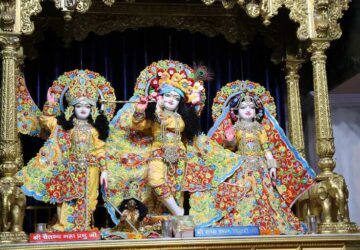
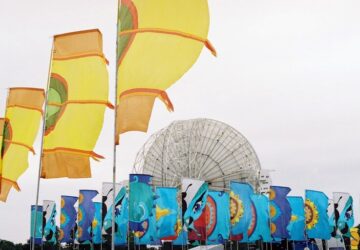
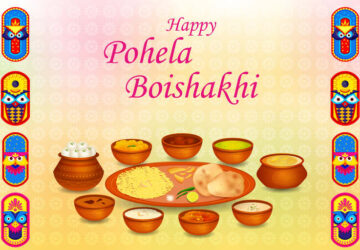
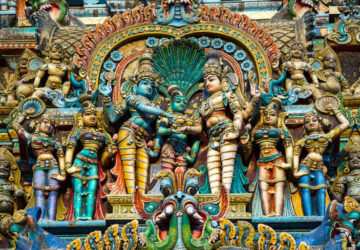
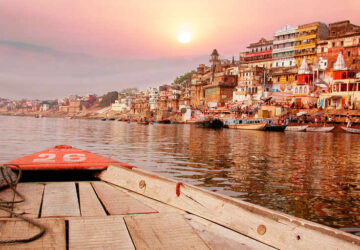
Related Post
Krishna Janmashtami: How Whole India Celebrates Krishna's Birthday in Unique Ways
Mopin Festival: Revelry and Tradition in the Hills
Pohela Boishakh: Welcoming the Bengali New Year with Splendour
Chithirai Festival: A Spectacle of Tradition and Culture
Explore the Famous Ghats of Varanasi
Konkan Coastal Paradise: A Guide to the Top 10 Beaches You Can't Miss
Ayodhya Tour Guide- A Comprehensive Guide For Your Next Ayodhya Tour
Top Places to Visit In Somnath
The Importance of Buddha Purnima and Where to Celebrate Lord Buddha's Festival
Ayodhya Ram Mandir: History, Architecture and Significance